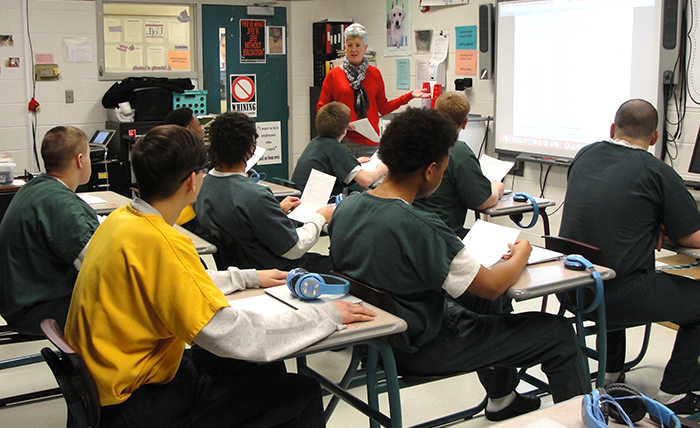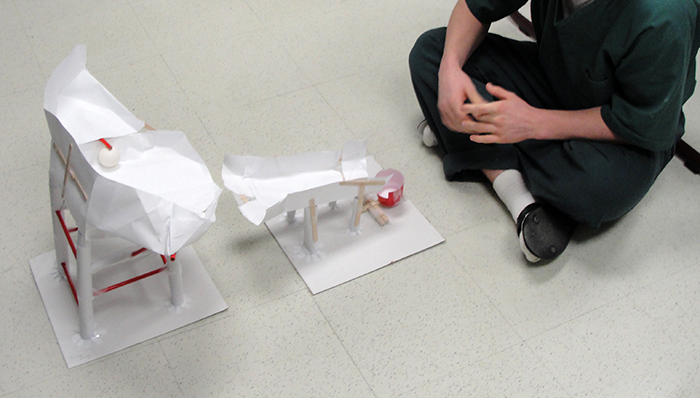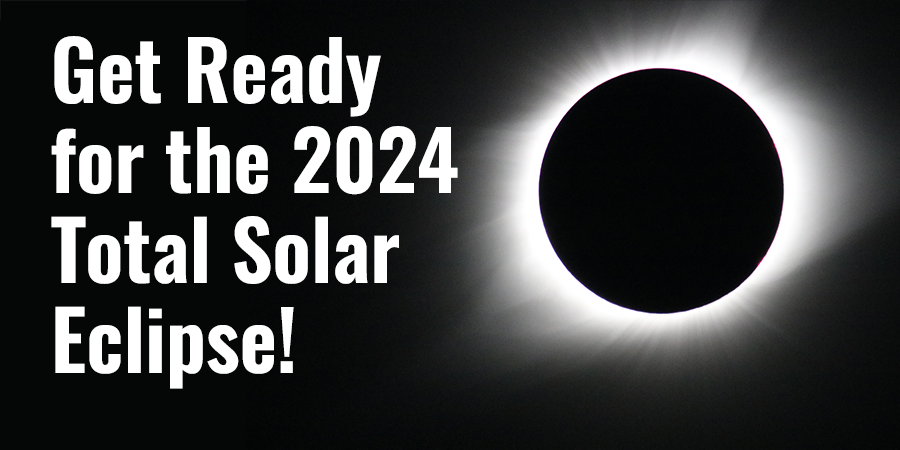Challenges Don’t Stop this School from Making STEM Hands-on
Teachers at this alternative educational program in Kentucky use free science and engineering activities from Science Buddies to provide safe and engaging STEM learning opportunities for their students.

Dedication to ensuring access to free, quality science, technology, engineering, and math (STEM) resources for students everywhere is at the heart of Science Buddies' mission. Almost 1,500 free science projects, activities, and lesson plans are a testament to this ideal, and special programs like the annual K-12 Fluor Engineering Challenge, encourage even more students around the world to get hands-on with STEM.
For educators like Lucinda Mills, an English teacher at McCracken Regional School in KY, free science and engineering projects like the 2019 Volleyball Machine Fluor Engineering Challenge play an important role in the school's ability to provide STEM learning opportunities for students.
McCracken Regional School is an educational program within a juvenile detention facility operated by the Kentucky Department of Juvenile Justice. "We serve the 18 western-most counties in Kentucky, and the facility is classified as a short-term holding facility for youth who are awaiting adjudication," explains Lucinda about the school she has taught at for the last 21 years.
Part of the challenge for teachers at McCracken Regional School is that most students attend for a short amount of time, but the time varies by student. "The average length of stay for our students is approximately 24 days," says Lucinda, although she notes that there are students who stay for longer periods of time, even more than a year in some cases.
"We supplement our curriculum with activities from Science Buddies as a way to extend learning and create enthusiasm for science. Our students really respond well to any hands-on activity and that gives them a new perspective on concepts they learn through their online courses."
Lucinda Mills, McCracken Regional School
Planning standards-based curriculum for students who enter and exit the school on a rolling basis can be especially difficult as Lucinda and her co-teachers work with at-risk students in multiple grades, from multiple schools, and at different levels of academic readiness in each class. Maximum enrollment at the school is 48, and most of the students who attend McCracken Regional School are ages 11-18. Although most students are in middle or high school, they are grouped in classes at McCracken Regional School based on factors other than grade level. All of the schools that feed into McCracken Regional School follow the same state standards and curriculum, but the multi-grade nature of Lucinda's typical classroom means that students may be at very different points in their science learning.
For Lucinda and her co-teachers, the free resources available at Science Buddies have provided a foundation for STEM learning that would otherwise not be possible. "Staffing in a small school can be a challenge at times, and until recently we had gone for several years without a certified science teacher," Lucinda explains. "The science instruction responsibilities were shared among 3 teachers, none of whom were certified in science. We delivered science instruction through an online curriculum, incorporating outside resources and working collaboratively with other educators and professionals who are science experts."
Lucinda discovered Science Buddies when looking for STEM activities she and the other teachers could do with students in addition to STEM education being provided by a local meteorologist. "We supplement our curriculum with activities from Science Buddies as a way to extend learning and create enthusiasm for science," says Lucinda. "Our students really respond well to any hands-on activity and that gives them a new perspective on concepts they learn through their online courses."

Hands-on STEM with Everyday Materials
McCracken Regional School has participated in the Fluor Engineering Challenge since its inception in 2015. Lucinda says that the first year, they did the Balloon Car challenge as an in-house competition but didn't submit their entries. After testing the idea of the Fluor Challenge the first year, students from McCracken Regional School have completed and entered Marble Machine (2016), Follow the Flow (2017), Ball Launcher (2018), and Volleyball Machine (2019) solutions. The Fluor Challenge has become an anticipated part of the school's STEM calendar.
"The yearly Fluor Challenge is an exciting opportunity for students. They love the challenge of designing a device to solve a problem, and they definitely enjoy the competition of determining which device is the most efficient. My students are creative, intelligent, and thoughtful, and they relish the opportunity to demonstrate those skills in the Fluor Challenge," says Lucinda. "The possibility of being chosen as a money winner is pretty exciting for them as well!"
Each year, the Fluor Challenge includes a limited list of allowable materials. This encourages students to think creatively and innovatively when designing solutions, but the materials list also helps ensure equity in the challenge. That the annual STEM challenge typically involves basic materials (like paper, cardboard, and plastic cups) is especially important at McCracken Regional School. "Any hands-on activity in a program like ours comes with a lot of potential problems. We have to maintain the safety and security of staff and students at all times, so materials are a huge consideration," admits Lucinda. "In a secure facility such as ours, we must be vigilant in screening our materials and limit items that could possibly allow a student to hurt themselves or others."
At Science Buddies, the emphasis on hands-on STEM exploration with everyday materials extends beyond the Fluor Challenge. The STEM Activities for Kids area contains more than 100 short-term science activities, most of which use readily available materials. Educator lesson plans, too, use everyday materials when possible to make it easy for teachers to bring these activities into the classroom. Science Buddies' library of resources for creating meaningful STEM learning opportunities with simple and inexpensive materials provides a much-needed toolbox for Lucinda and her co-teachers, one that enables them to safely and confidently do more STEM with students. "One aspect that I absolutely love about the Science Buddies website is that there are many activities that use everyday items that are perfectly safe to use in a secure facility. I don't have to spend a lot of money or worry that I've given students access to something that might be harmful to them because a lot of the materials required in Science Buddies activities are things that I already have in my classroom."
Given the constraints and considerations for her classroom, Lucinda is creative about adapting activities to work with her students. Projects she has done with students include balloon-powered car experiments, the Paper Rocket activity that helps students understand the steps of the scientific method, and bridge design explorations using wooden sticks and/or spaghetti.
"Science Buddies offers activities that use inexpensive, everyday items and presents the information in such a way that even an English teacher like me can implement in class. That is a dream come true for a busy teacher!"
Lucinda Mills, McCracken Regional School
Equal Access to STEM Education
Science Buddies believes in the power of STEM education for all students. We know that supporting educators working with students at all stages of their K-12 education — and in all settings — is important to improving science literacy and helping more students make real-world and personal connections with STEM and the possibility of STEM careers.
"The Science Buddies website gives me access to online resources that help me teach in an area outside of my certification," says Lucinda. "Science Buddies offers activities that use inexpensive, everyday items and presents the information in such a way that even an English teacher like me can implement in class. That is a dream come true for a busy teacher!! Thank you Science Buddies and thanks to your generous sponsors who help me do my job every day!!"
Thank you to Lucinda for sharing her story with Science Buddies.
Note: McCracken Regional School was chosen as a Kentucky Department of Education Alternative Program of Distinction in 2016, 2017 and 2018.
Share Your Science Buddies Story!
Have you used a science project, STEM activity, or Lesson Plan from Science Buddies in your class or program? We would love to hear your story! Email us at scibuddy@sciencebuddies.org and tell us how you use Science Buddies with students.
Categories:
You Might Also Enjoy These Related Posts:
- Making Recycling Sorting Machines—STEM Success
- Mini Trebuchets and a NM MESA Challenge
- Helping Students Build Coding Skills with Drones and Self-Driving Cars
- Middle School Student Codes to Improve Life with Visual Impairment
- Student Science Project - Designing and Coding a Video Game to Help People with Alzheimer's
- Teacher Combines Computer Science and Engineering Design for Middle School Students - STEM Success Story
- A Mirror Maze Success Story
- Paper Roller Coasters and Energy Transformation: STEM Teacher Success Story










